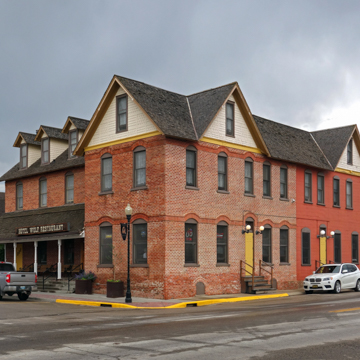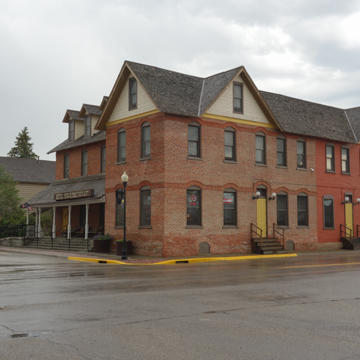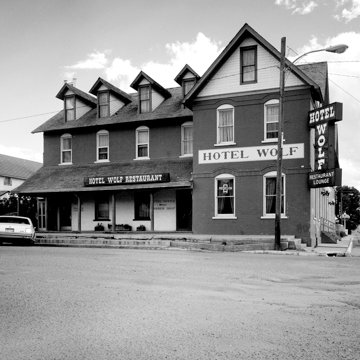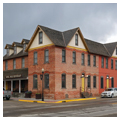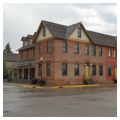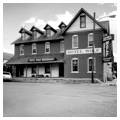You are here
Hotel Wolf
The Hotel Wolf was built in 1893–1894 to serve travelers on the Encampment to Wolcott Stage Line, as well as visitors who came for the healing qualities of the area’s hot springs. Saratoga, Wyoming, like the more famous Saratoga, New York, is known for its hot springs, which were used by Native Americans and later fur trappers and ranchers before the small town was developed. The surrounding lands of the Upper North Platte River Valley were known for their excellent hay-growing potential, as well as their prime hunting opportunities. The completion of the Union Pacific rail line to Fort Steele in 1868 increased the accessibility of the quiet valley and the popularity of the hot springs, then known as Warm Springs, where a modest bathhouse was built to entice travelers.
Frederick G. Wolf originally came to Saratoga in 1887, hoping that the hot springs would ease the pain of his rheumatism. In the 1890s, copper was discovered in nearby Encampment, placing Saratoga in a strategic location between the mining town and the Union Pacific Railroad. Seeing an opportunity, Wolf purchased two lots on which he built a much needed hotel. The hotel became a popular stage stop on the Encampment to Walcott Stage Line.
The Hotel Wolf, completed in 1894, occupies the main corner in downtown Saratoga. The two-and-a-half-story, L-plan, red brick building reflects its late Victorian origins, with its steeply pitched gable roofs and dormers, elaborate window hoods, and decorated gable ends. The front of the hotel faces north onto Bridge Avenue and the west elevation faces State Highway 130. The building rests on a stone foundation. Its cross-gabled roof is sheathed in wooden shingles and features gable ends finished with bands of decorative shingles at both sides of the main corner and south end of the west elevation. Four narrow, gabled dormers project from the north roof slope. A wood-framed extension was built onto the south end of the west elevation in 1895 to add more guest rooms. The frame addition carries the same roof ridgeline to the south, but the exterior is clad in faux-brick tin siding.
The main entrance is on the north facade, in the slightly setback, short leg of the L, and is sheltered by a one-story, full-length, shed-roofed porch supported by turned posts. The tall rectangular windows on both stories of the original brick building are topped by brick segmental arches linked by a brick belt course. Carved and elaborated bargeboards and gable end screens, as well as three original brick chimneys, have been removed. The first floor houses a small reception area, saloon, and restaurant, while the upper two floors have guest rooms.
Throughout its long history, the Hotel Wolf has hosted overnight guests in finely furnished hotel rooms, and has provided a saloon and restaurant enjoyed by residents as well as visitors. A barbershop and a liquor store were also operated on the premises at one time. Despite several renovation projects, minor exterior changes, and a fire in 1989, the building retains much of its original character. Today, the Hotel Wolf is still known as the “Grand Old Gal of the Valley,” and remains a popular destination in Saratoga and an important reminder of the area’s heritage.
References
Junge, Mark, “Hotel Wolf,” Carbon County, Wyoming. National Register of Historic Places Inventory–Nomination Form, 1974. National Park Service, U.S. Department of the Interior, Washington, D.C.
Writing Credits
If SAH Archipedia has been useful to you, please consider supporting it.
SAH Archipedia tells the story of the United States through its buildings, landscapes, and cities. This freely available resource empowers the public with authoritative knowledge that deepens their understanding and appreciation of the built environment. But the Society of Architectural Historians, which created SAH Archipedia with University of Virginia Press, needs your support to maintain the high-caliber research, writing, photography, cartography, editing, design, and programming that make SAH Archipedia a trusted online resource available to all who value the history of place, heritage tourism, and learning.

